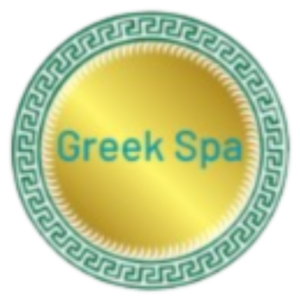Ayurvadic Massage
In the realm of holistic healing practices, Ayurvedic Massage emerges as a profound and time-honored tradition rooted in the ancient wisdom of Ayurveda. Originating in India over 5,000 years ago, Ayurveda is a holistic system of medicine that seeks to harmonize the mind, body, and spirit. Ayurvedic Massage, an integral part of this ancient healing science, goes beyond mere physical therapy, aiming to restore balance and vitality to the entire being. In this blog post, we will explore the origins, principles, techniques, and transformative benefits of Ayurvedic Massage.
- Foundations of Ayurveda:
Ayurveda, often referred to as the “science of life,” is a holistic approach to well-being that recognizes the unique constitution of each individual, known as their dosha. The three doshas—Vata (air and space), Pitta (fire and water), and Kapha (earth and water)—are fundamental energies that govern various physiological and psychological functions in the body. Ayurveda seeks to maintain or restore harmony among the doshas to promote optimal health.
- Philosophy Behind Ayurvedic Massage:
Ayurvedic Massage, or “Abhyanga,” is deeply rooted in Ayurvedic philosophy. It is a ritualistic and therapeutic practice that aims to balance the doshas, enhance circulation, eliminate toxins (ama), and promote overall well-being. The massage is tailored to an individual’s unique constitution, ensuring a personalized and holistic approach to healing.
- Techniques of Ayurvedic Massage:
Choice of Oils: The choice of oils in Ayurvedic Massage is crucial, as different oils are recommended for each dosha. For example, sesame oil is often used for Vata types, while coconut or sunflower oil may be suitable for Pitta, and mustard or sesame oil for Kapha.
Abhyanga Strokes: The massage involves a series of long, rhythmic strokes that follow the direction of the body’s energy channels. The strokes are designed to stimulate energy flow, relax the muscles, and promote the movement of lymphatic fluid.
Marma Points Activation: Ayurvedic Massage often incorporates the activation of marma points—specific energy points on the body similar to acupressure points. Stimulating these points is believed to balance the flow of energy and enhance overall well-being.
Herbal Pastes and Poultices: In some Ayurvedic massages, herbal pastes or poultices may be applied to the body. These herbal mixtures are chosen based on their therapeutic properties and contribute to detoxification and rejuvenation.
- Customization Based on Dosha:
One of the unique aspects of Ayurvedic Massage is its customization according to an individual’s dosha. For example:
Vata Balancing: Vata types benefit from a warm and grounding massage with oils like sesame, focusing on slow and calming strokes to pacify excess Vata energy.
Pitta Pacifying: Pitta types may benefit from a cooling massage using coconut or sunflower oil to alleviate heat. Gentle and soothing strokes are applied to balance Pitta dosha.
Kapha Harmonizing: Kapha types benefit from invigorating and warming massages using mustard or sesame oil. The strokes are more vigorous to stimulate and balance Kapha energy.
- Detoxification and Rejuvenation:
Ayurvedic Massage is not just a physical therapy; it is a holistic approach to detoxification and rejuvenation. The rhythmic strokes aid in lymphatic drainage, helping the body eliminate toxins. The use of specific oils and herbal ingredients contributes to nourishing and revitalizing the skin, promoting a radiant and healthy complexion.
- Balancing the Doshas for Overall Well-being:
The primary goal of Ayurvedic Massage is to restore balance among the doshas. When the doshas are in harmony, it reflects in improved digestion, enhanced energy levels, mental clarity, and emotional well-being. Regular Ayurvedic Massage is considered a preventive measure, helping to maintain balance and prevent imbalances that could lead to disease.
- Mind-Body Connection:
Ayurvedic Massage recognizes the inseparable connection between the mind and body. The therapeutic touch not only addresses physical ailments but also has a profound impact on mental and emotional well-being. The release of tension and the promotion of relaxation contribute to a sense of inner peace and clarity.
- Choosing an Ayurvedic Practitioner:
To fully experience the benefits of Ayurvedic Massage, it’s essential to seek a qualified practitioner with knowledge of Ayurvedic principles. Look for practitioners who have undergone formal training in Ayurveda and are experienced in tailoring massages to individual doshas.
Conclusion:
Ayurvedic Massage is a sacred and transformative journey into the heart of Ayurveda, offering a holistic approach to well-being that encompasses the body, mind, and spirit. From its ancient roots in Ayurvedic philosophy to the personalized techniques tailored to individual doshas, this healing art stands as a testament to the wisdom of ancient traditions. Embrace the rejuvenating power of Ayurvedic Massage, and allow the rhythmic strokes and healing oils to guide you on a path of balance, vitality, and profound well-being.
